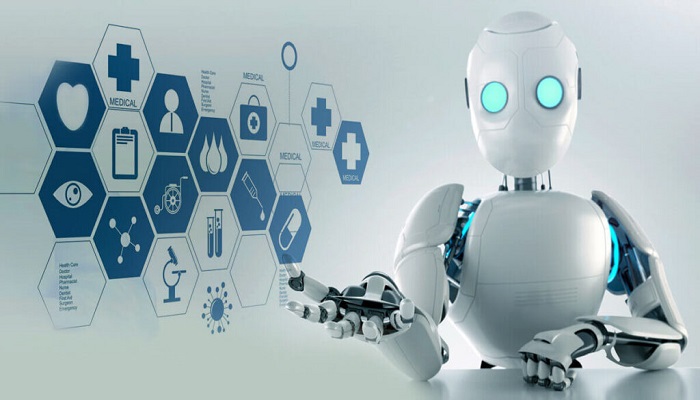For the majority of individuals, technology has an impact on virtually every aspect of their day-to-day life. This influence can be observed in all aspects of life, including social circumstances, professional situations, and informal situations. Technology has also brought about significant changes in the manner in which medical treatment is delivered to members of society. From the stethoscope and X-rays to wearable technology and user portals powered by artificial intelligence, technology has altered the manner in which health care is both supplied and utilized.
The magnitude of their influence is not just demonstrated by straightforward examples; it is also evident from the enormous sums of money that are anticipated to be received. It was estimated that the market for medical devices was worth $471.80 billion in 2023. It reached a volume of $609.70 billion after growing at a rate of 5.26 percent annually until it reached that point. The production of medical devices, on the other hand, has seen a transformation during the past few years as a result of technological advancements. These advancements have not only resulted in factories and production lines becoming more efficient, but they have also led to the development of improved medical devices that are of assistance to both patients and the caregivers who assist them.
Why medical device makers need to come up with new ideas
The medical device business is under more pressure than ever to keep making devices better, getting them to market faster, and lowering their prices. The medical device, biotechnology, and pharmaceutical industries can get help from Contract Research Organizations (CROs), which are businesses that offer clinical research services on a contract basis.
Traditional methods for making medical devices need to keep up with these changing needs. The biggest problem is that the business needs to come up with new ideas all the time to keep up with the growing needs of patients and healthcare providers.
Different kinds of automation used in the medical field
To boost output, cut costs, and lower the chance of mistakes, companies that make medical devices can use the following automatic technologies for clinical research:
Robotics that work together
It’s not possible to totally get rid of human labor in manufacturing through automation. Collaborative Robotics (Cobot), on the other hand, is used by companies that make medical gadgets, not big robots. In the workplace, especially on assembly lines, cobots work with people. When cobots are used correctly, the staff can focus on the parts of the business that can only be done by people, like imagination and innovation.
In the case of making a medical device robot, for example, the robot can be given most of the heat-sealing tasks. Moving boxes and lids to and from a desktop heat-sealing machine is one of these tasks. After that, cobots can start the heating process. As boring as these tasks are, they can be done correctly and as quickly as possible. After that, the workers can focus on quality control or a linked task.
Analytics Powered by AI
A contract research company can look through huge amounts of data. But it can be hard to find such accurate info for things like manufacturing and planning. Some makers use technologies that use AI to analyze data. When AI is built into business systems, it can help with statistical analysis, planning for system maintenance, and figuring out the best ways to set up processes. These systems look through big data for information that is useful.
If this kind of data is available, it might speed up the decision-making process and let makers see what needs to be improved. For example, they can figure out when things are most likely to break down before they actually do. After that, organizations can take preventative steps to make it less likely that this will happen, which leaves makers with no choice but to use proactive maintenance steps. But the second one can give you a chance to work with the main metrics and signs that we talked about in the context of KPIs. The data’s access can help people figure out how to improve the way things are made, boost productivity, and make sure quality.
Solutions for Automated Packaging
Using automated packaging methods may also lower the cost of packing, which is another benefit. To keep the chances of making bad products for CROs to a minimum, all of these options use smart software instead of people working on them. This kind of automated packing can do many things, such as flow wrapping, cartoning, filling, and pouching. In turn, this means that companies that make medical devices will be able to increase output, lower prices, and follow the new rules. Also, automated methods make the packaging line more efficient.
Better management of medical devices
Most people use medical tools to get healthier, help them get better after surgery or other treatments, or keep them from getting sick. As they get older, these devices get IoMT sensors built right in. This lets you keep an eye on them from one place and quickly fix any problems that come up. That’s why different monitoring software can sound an alarm when it finds a number that isn’t normal. This lets service providers fix problems before they get worse.
Traveling to and from different meetings can take a lot of time and cost a lot of money for some patients. Doctors can tell patients when they should go to the hospital for treatment and when they should bring their tools in for service or replacement if they are being watched from afar.
In conclusion
The medical gadget business is still growing very quickly, and some predicted growth could make a huge difference in the healthcare field. There are, however, some things that make medical gadget technology harder to use, such as rules and problems with data privacy and security. Many good things can come from this technology, like making patients’ lives and health better, lowering the cost of healthcare, and reducing differences between people.


















